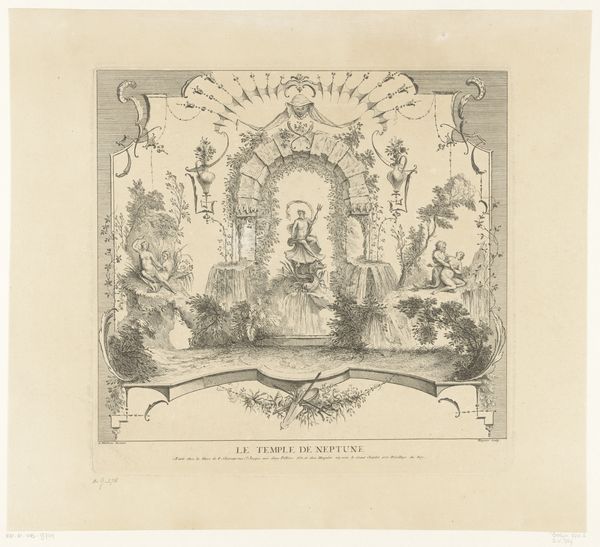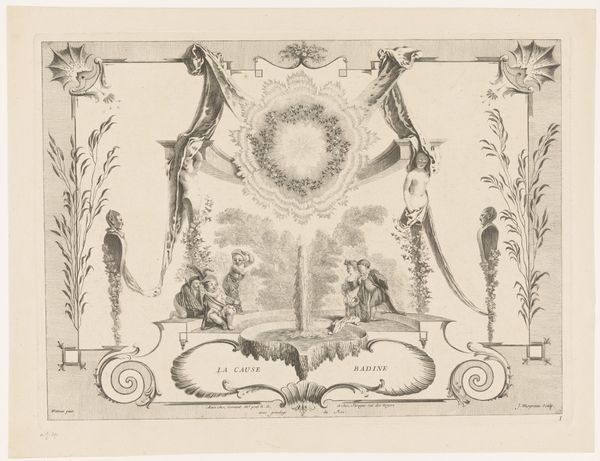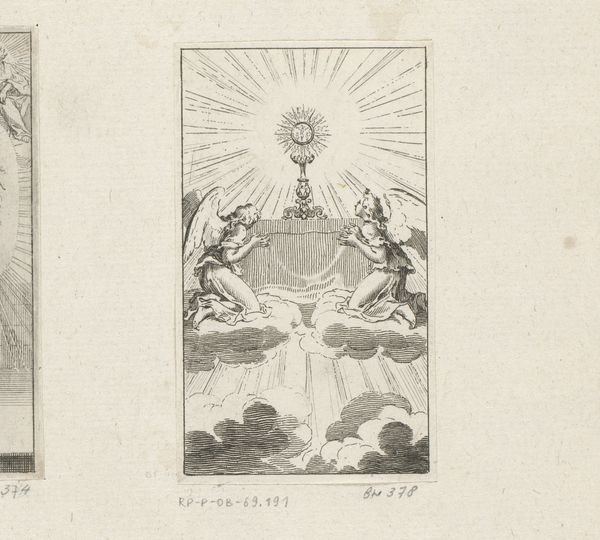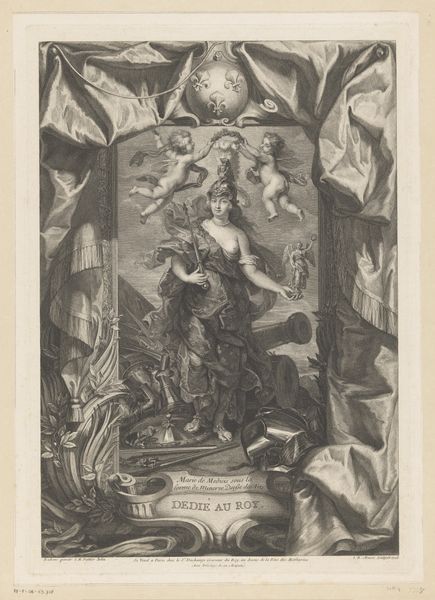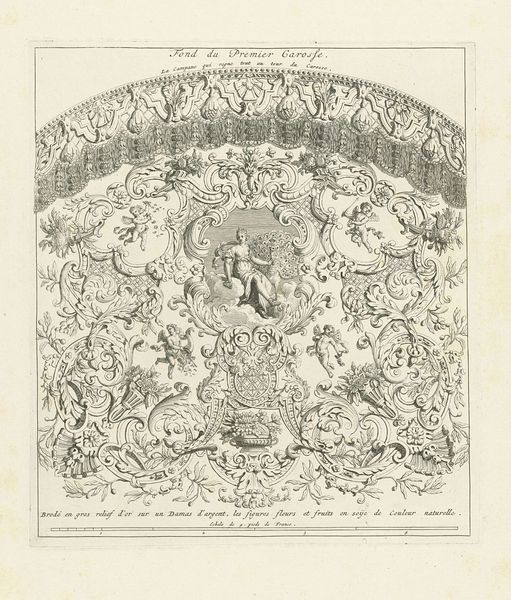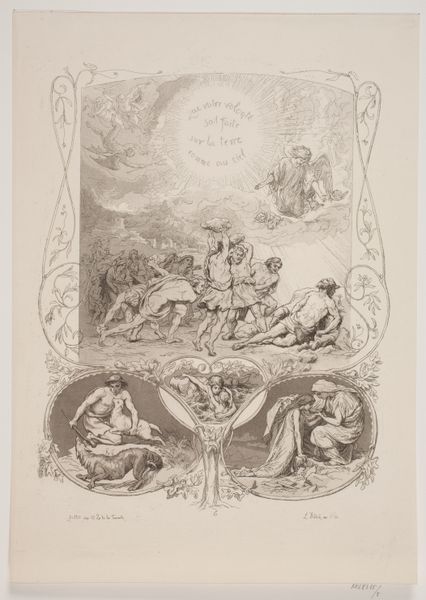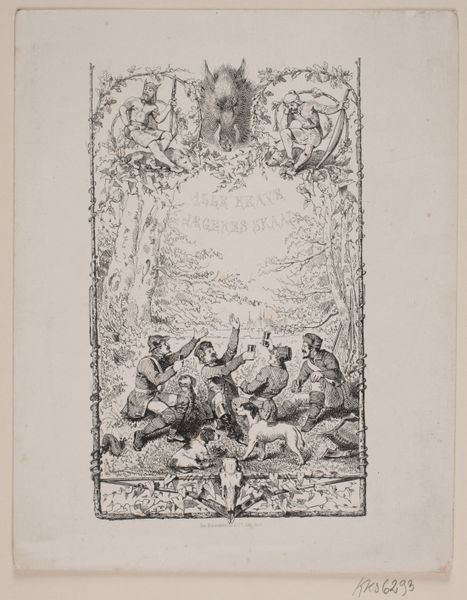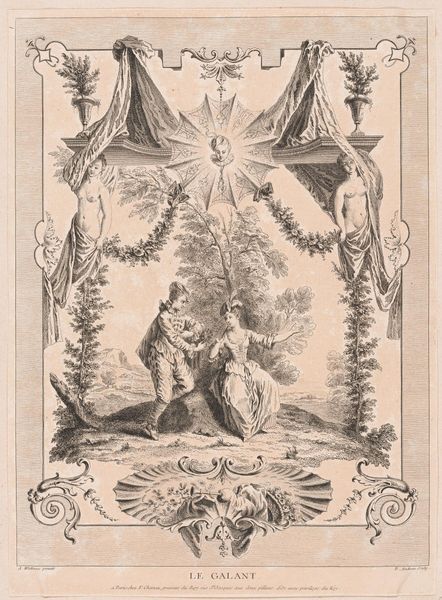
print, paper, ink, engraving
#
baroque
#
ink paper printed
# print
#
old engraving style
#
paper
#
ink
#
line
#
history-painting
#
engraving
Dimensions: height 105 mm, width 56 mm
Copyright: Rijks Museum: Open Domain
Curator: This image from the Rijksmuseum is titled "Monstrans met God," dating approximately from 1608 to 1688. It's an engraving printed on paper. Editor: My immediate reaction is one of theatrical grandeur; there’s something almost overwhelming about the density of figures and the sheer, intricate detail of the composition. Curator: Indeed. The print makes potent use of verticality; observe how your eye travels from the inscription at the base to the figure of God at the summit. And then note how all is mediated by a light and an elaborately ornate monstrance. It's worth analyzing how the lines define form and suggest volume, especially the clouds with faces. Editor: I am curious about its original socio-religious context. Prints such as this would have served diverse functions from personal devotional aids to elements in larger propagandistic projects that bolster particular theological positions. Do we know much about where this particular print was circulated? Curator: Regrettably, the artist remains anonymous, a not-uncommon occurrence. But we do know, if we consider Baroque religious art from this period, the use of light— the rays emanating from the monstrance— serves as a signifier for divine presence. See how the faces in the clouds look upward in an adoring state. Editor: And consider the inscription! "O Charitas? Caro mea vere est cibus". This use of language underscores a core theological claim and further activates the artwork for viewers familiar with biblical Latin. One might also ask how similar imagery would be understood by both elites and common people. Curator: I agree completely. A study of line, composition, and light rewards the viewer by underscoring meaning. It's all orchestrated beautifully on this rather small surface. Editor: And knowing the broader context—the politics of the time, its religious sensibilities—deepens one’s understanding of this engraving as more than mere decoration. Curator: Precisely, seeing both the inherent structure and its milieu makes the encounter worthwhile. Editor: Agreed, such artwork showcases not just skill but faith reflected through the lens of cultural values.
Comments
No comments
Be the first to comment and join the conversation on the ultimate creative platform.
